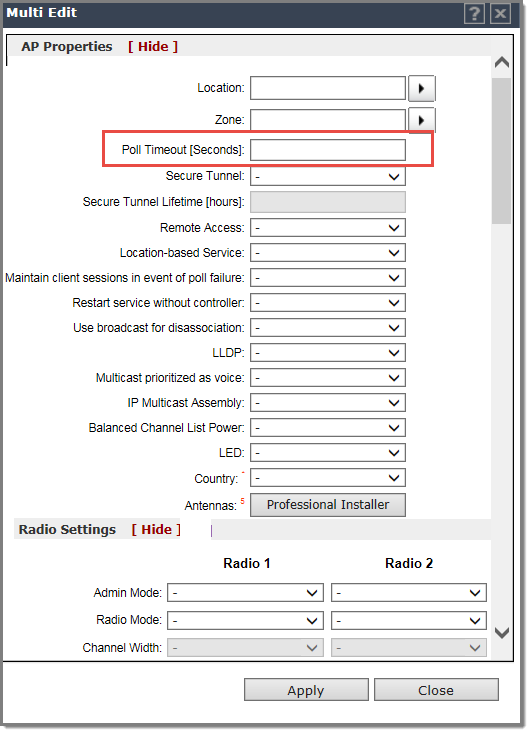Before you configure the fast failover feature, ensure the following:

Note
The fast failover feature works optimally in fast networks (preferably switched networks).To configure Fast Failover and enable Session Availability:

The Detect link failure field specifies the period within which the system detects link failure after the link has failed. For fast failover configuration, this parameter is tied closely to the Poll Timeout parameter on the AP Properties tab Advanced dialog. The Poll Timeout field specifies the period for which the wireless AP waits before re-attempting to establish a link when its polling to the primary controller fails.
For the fast failover feature to work within 5 seconds, the Poll Timeout value should be 1.5 to 2 times the Detect link failure value. For example, if you have set the Detect link failure value to 2 seconds, the Poll Timeout value should be set to 3 or 4 seconds.
This is a global parameter that enables synchronization of VNS configuration components (topology, role, WLAN Service, VNS) on both controllers paired for availability and/or fast failover.
For more information about synchronization, see Using the Sync Summary.


Note
The fast failover configuration must be identical on both the primary and secondary controllers. Logs are generated if the configuration is not identical. For more information, see the ExtremeWireless Maintenance Guide.After you have configured fast failover, you can verify session availability to preserve the user session during the failover.